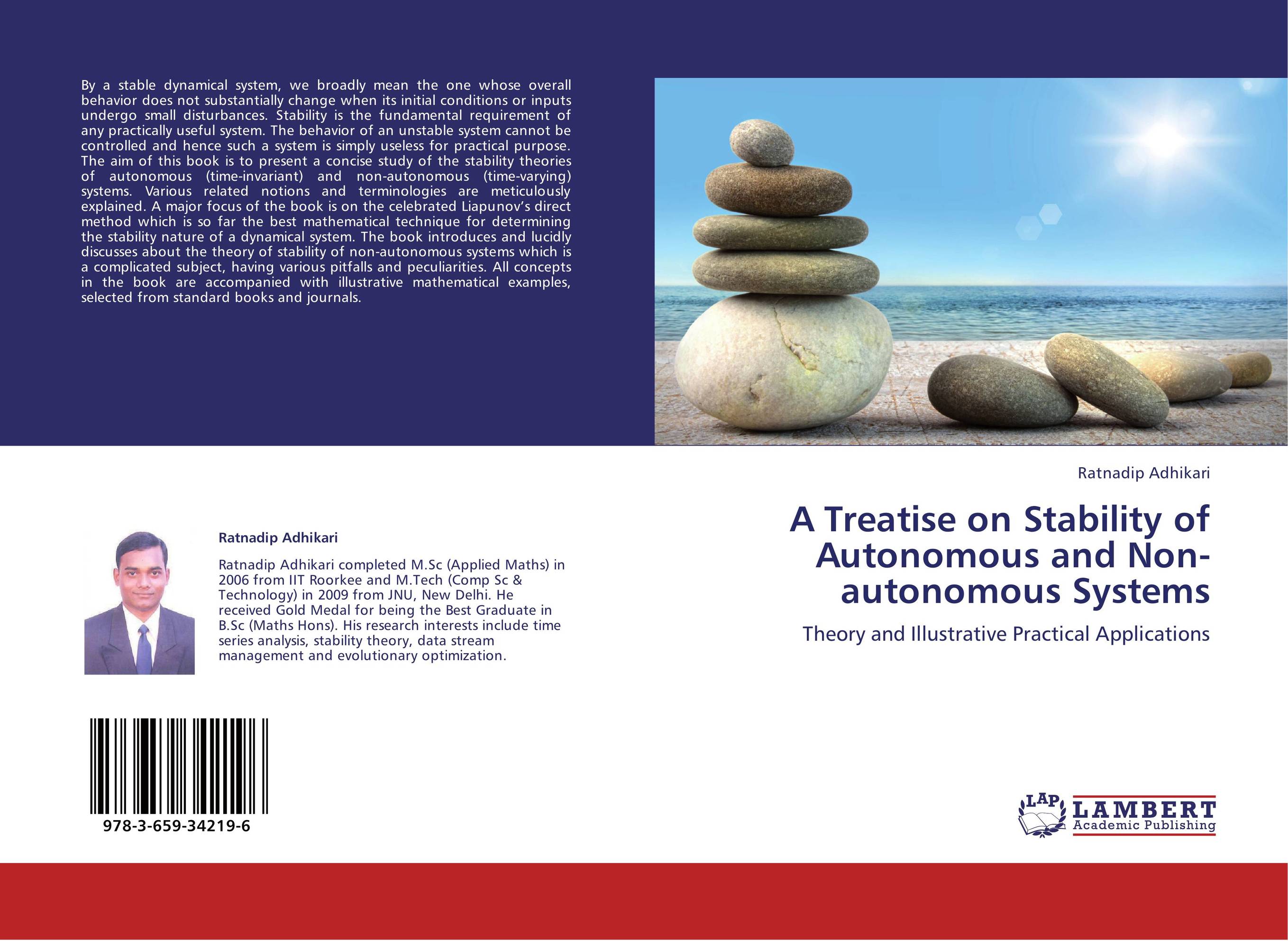| Поиск по каталогу |
|
(строгое соответствие)
|
- Профессиональная
- Научно-популярная
- Художественная
- Публицистика
- Детская
- Искусство
- Хобби, семья, дом
- Спорт
- Путеводители
- Блокноты, тетради, открытки
A Treatise on Stability of Autonomous and Non-autonomous Systems. Theory and Illustrative Practical Applications

В наличии
| Местонахождение: Алматы | Состояние экземпляра: новый |

Бумажная
версия
версия
Автор: Ratnadip Adhikari
ISBN: 9783659342196
Год издания: 2013
Формат книги: 60×90/16 (145×215 мм)
Количество страниц: 84
Издательство: LAP LAMBERT Academic Publishing
Цена: 30642 тг
Положить в корзину
| Способы доставки в город Алматы * комплектация (срок до отгрузки) не более 2 рабочих дней |
| Самовывоз из города Алматы (пункты самовывоза партнёра CDEK) |
| Курьерская доставка CDEK из города Москва |
| Доставка Почтой России из города Москва |
Аннотация: By a stable dynamical system, we broadly mean the one whose overall behavior does not substantially change when its initial conditions or inputs undergo small disturbances. Stability is the fundamental requirement of any practically useful system. The behavior of an unstable system cannot be controlled and hence such a system is simply useless for practical purpose. The aim of this book is to present a concise study of the stability theories of autonomous (time-invariant) and non-autonomous (time-varying) systems. Various related notions and terminologies are meticulously explained. A major focus of the book is on the celebrated Liapunov’s direct method which is so far the best mathematical technique for determining the stability nature of a dynamical system. The book introduces and lucidly discusses about the theory of stability of non-autonomous systems which is a complicated subject, having various pitfalls and peculiarities. All concepts in the book are accompanied with illustrative mathematical examples, selected from standard books and journals.
Ключевые слова: Stability, Control Theory, dynamical systems, Exponential stability, Autonomous and Non-autonomous Systems, Liapunov's Method, Periodic Systems



